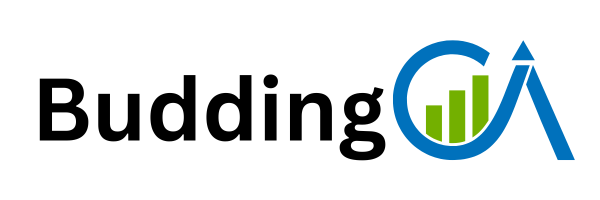A resume is more than just a list of your qualifications and work experience. It is your professional marketing document that introduces you to potential employers. However, one common mistake many job seekers make is sending the same generic resume for every job application. This approach reduces your chances of catching the recruiter’s eye because every job role requires a specific set of skills and experiences. Therefore, editing your resume according to the job role is crucial for increasing your chances of success.
This article explains in detail how you can tailor your resume to match the job you are applying for. It provides actionable steps to help you make your resume targeted, relevant, and compelling to hiring managers and Applicant Tracking Systems (ATS). Whether you are a fresher or an experienced professional, these guidelines will assist you in presenting your best self for each unique job opportunity.
Why Is Editing Your Resume According to Job Role Important?
Before diving into the how-to, it is essential to understand why customising your resume matters:
- Catch the Recruiter’s Attention: Recruiters spend only a few seconds scanning each resume. If your resume clearly reflects the requirements of the job, it stands a better chance of being shortlisted.
- Beat Applicant Tracking Systems: Most companies today use ATS software to filter applications. These systems scan resumes for specific keywords from the job description. A tailored resume with the right keywords improves your chances of clearing this first stage.
- Highlight Relevant Skills and Experience: Different roles focus on different skills and expertise. Customising your resume allows you to emphasise the qualities that are most relevant to the specific job.
- Show Your Interest and Effort: A resume that aligns with the job description shows that you have put effort into understanding the role and are genuinely interested.
Step-by-Step Guide on How to Edit Your Resume According to Your Job Role
1. Analyse the Job Description Thoroughly
The first step towards customising your resume is to carefully read and analyse the job advertisement or description. The job description usually mentions:
- Required skills and qualifications
- Responsibilities and duties
- Desired experience level
- Keywords and phrases that are critical to the role
Tip: Print the job description or open it on a separate screen. Highlight or underline the important skills, action verbs, and keywords that appear frequently.
For example, if the job description mentions skills like “project management,” “team leadership,” and “client communication,” you should ensure these words appear in your resume where relevant.
2. Choose the Right Resume Format
There are three common resume formats:
- Chronological Resume: Lists your work experience in reverse chronological order. This format suits candidates with a consistent work history in the same field.
- Functional Resume: Focuses on skills and competencies rather than work experience. Ideal for those switching careers or with gaps in employment.
- Hybrid (Combination) Resume: Combines elements of both chronological and functional formats. It highlights skills while providing a timeline of experience.
How to choose?
- If your previous jobs closely match the job role, a chronological resume is best.
- If you are changing industries or roles, a functional resume can highlight transferable skills.
- If you want to showcase both skills and experience, opt for a hybrid resume.
3. Customise the Resume Title
The resume title is the first thing recruiters see. Instead of generic titles like “Resume” or “Curriculum Vitae,” use a job-specific title.
For example, if you are applying for a marketing manager position, your title could be:
“Experienced Marketing Manager | Digital Marketing Specialist | SEO & Campaign Expert”
This helps recruiters immediately know your area of expertise and improves the chances of passing ATS scans.
4. Write a Job-Specific Summary or Objective
The summary or career objective section is your elevator pitch. This should be a concise paragraph (3-4 lines) summarising your experience, skills, and career goals relevant to the role.
- For experienced candidates, write a summary of qualifications highlighting key skills and accomplishments.
- For freshers or entry-level candidates, write a career objective focusing on what you aim to achieve and how your skills align with the job.
Example:
“Result-oriented finance professional with 5 years’ experience in budgeting, financial analysis, and compliance. Skilled in SAP and Tally with proven expertise in reducing costs and improving accuracy. Seeking to leverage my skills as a Senior Financial Analyst at XYZ Ltd.”
Make sure to use keywords from the job description here.
5. Highlight Relevant Skills Prominently
Skills are often the deciding factor in shortlisting candidates. Create a dedicated Skills section near the top of your resume. List technical skills, soft skills, and job-specific competencies that the employer seeks.
How to do it:
- Use bullet points for easy scanning.
- Prioritise the skills mentioned in the job description.
- Include a mix of hard skills (software, tools, certifications) and soft skills (communication, teamwork).
Example:
- Project Management
- Client Relationship Management
- Budget Planning and Control
- Advanced Excel and PowerPoint
- Leadership and Team Building
6. Tailor Your Professional Experience
Your work experience should be customised to emphasise the responsibilities and achievements that align with the job role.
Steps:
- Reorder bullet points to feature the most relevant duties first.
- Use the same action verbs found in the job description (e.g., “managed,” “developed,” “implemented”).
- Quantify your achievements with numbers wherever possible (e.g., “Increased sales by 20%,” “Reduced processing time by 30%”).
- Remove or minimise details that do not relate to the job.
Example: If the job requires team management, highlight your experience leading teams, conducting meetings, and mentoring staff.
7. Include Relevant Education and Certifications
List your educational qualifications and certifications relevant to the job.
- If the job requires a specific degree or certification, mention it prominently.
- Include relevant training programmes or workshops.
- If you have additional certifications that give you an edge, add them.
For instance, if applying for an accounting role, certifications like CA, CMA, or CPA should be clearly visible.
8. Add a Section for Achievements and Projects
Including specific achievements or projects related to the job role can significantly boost your resume.
- Mention any awards, recognitions, or successful projects.
- Highlight your contributions, outcomes, and the skills you used.
- This section can be titled “Key Achievements,” “Projects,” or “Accomplishments.”
9. Use Keywords Effectively for ATS
Many companies use Applicant Tracking Systems (ATS) to filter resumes before they reach human eyes.
- Identify keywords in the job description.
- Naturally include these keywords in your title, summary, skills, and experience sections.
- Avoid keyword stuffing, which can make your resume unreadable.
10. Keep the Resume Concise and Readable
- Use bullet points instead of large paragraphs.
- Keep sentences short and to the point.
- Use professional fonts like Arial, Calibri, or Times New Roman.
- Maintain consistent formatting throughout.
11. Proofread and Edit
A well-tailored resume should also be free from errors.
- Check for spelling, grammar, and punctuation mistakes.
- Ensure formatting is consistent.
- Ask a friend or mentor to review your resume for feedback.
Additional Tips for Editing Your Resume According to Job Role
Use Action Verbs
Start bullet points with strong action verbs like “Led,” “Developed,” “Implemented,” “Improved,” “Coordinated,” etc. This energises your resume and clearly shows your contributions.
Focus on Results
Employers want to know what you achieved, not just your duties. Include measurable results like sales growth, cost savings, process improvements, or customer satisfaction ratings.
Address Gaps or Career Changes
If you are switching careers or have employment gaps, use a functional or hybrid resume to focus on transferable skills and relevant accomplishments rather than a chronological history.
Tailor Cover Letter Alongside Resume
Your cover letter should complement your customised resume by explaining why you are a great fit for the job and how your skills match the employer’s needs.
Common Mistakes to Avoid While Editing Your Resume
- Using one generic resume for all applications: Avoid this at all costs. Always customise.
- Overloading with keywords: It should be natural and readable.
- Including irrelevant personal information: Stick to professional details.
- Making it too long: Ideally, keep your resume to 1-2 pages.
- Ignoring job-specific skills: Don’t forget to include the most important skills for the role.
- Poor formatting: Ensure clear headings, bullet points, and consistent fonts.
Sample Before and After: Editing a Resume for a Job Role
Job Role: Digital Marketing Executive
Key Skills from Job Description: SEO, Google Analytics, Content Marketing, Social Media Management, PPC campaigns
Before Editing:
- Worked in marketing department.
- Handled social media pages.
- Created content for company website.
- Assisted with campaigns.
After Editing:
- Managed SEO strategies resulting in a 30% increase in organic traffic within 6 months.
- Utilised Google Analytics to monitor campaign performance and adjust tactics accordingly.
- Developed content marketing plans that increased engagement on social media platforms by 25%.
- Executed PPC campaigns with a focus on maximising ROI and reducing cost per click by 15%.
Conclusion
Editing your resume according to the job role is a smart and necessary step in your job search. A targeted resume makes you stand out from the competition by clearly showing recruiters that you have the right skills, experience, and motivation for the job. By carefully analysing job descriptions, choosing the right format, using relevant keywords, and highlighting achievements, you can create a compelling resume that opens doors to interviews and opportunities.
Remember, your resume is your personal marketing tool. The effort you invest in tailoring it can significantly affect your career trajectory. Take time, review your resume for each application, and keep refining it until it perfectly matches the job role you desire.
Calling all CA dreamers!
🔴 Are you tired of searching for the perfect articelship or job?
Well, fear no more! With 10K+ students and professionals already on board, you don't want to be left behind. Be a part of the biggest community around! Join the most reliable and fastest-growing community out there! ❤️
And guess what? It’s FREE 🤑
✅ Join our WhatsApp Group (Click Here) and Telegram Channel (Click Here) today for instant updates.




